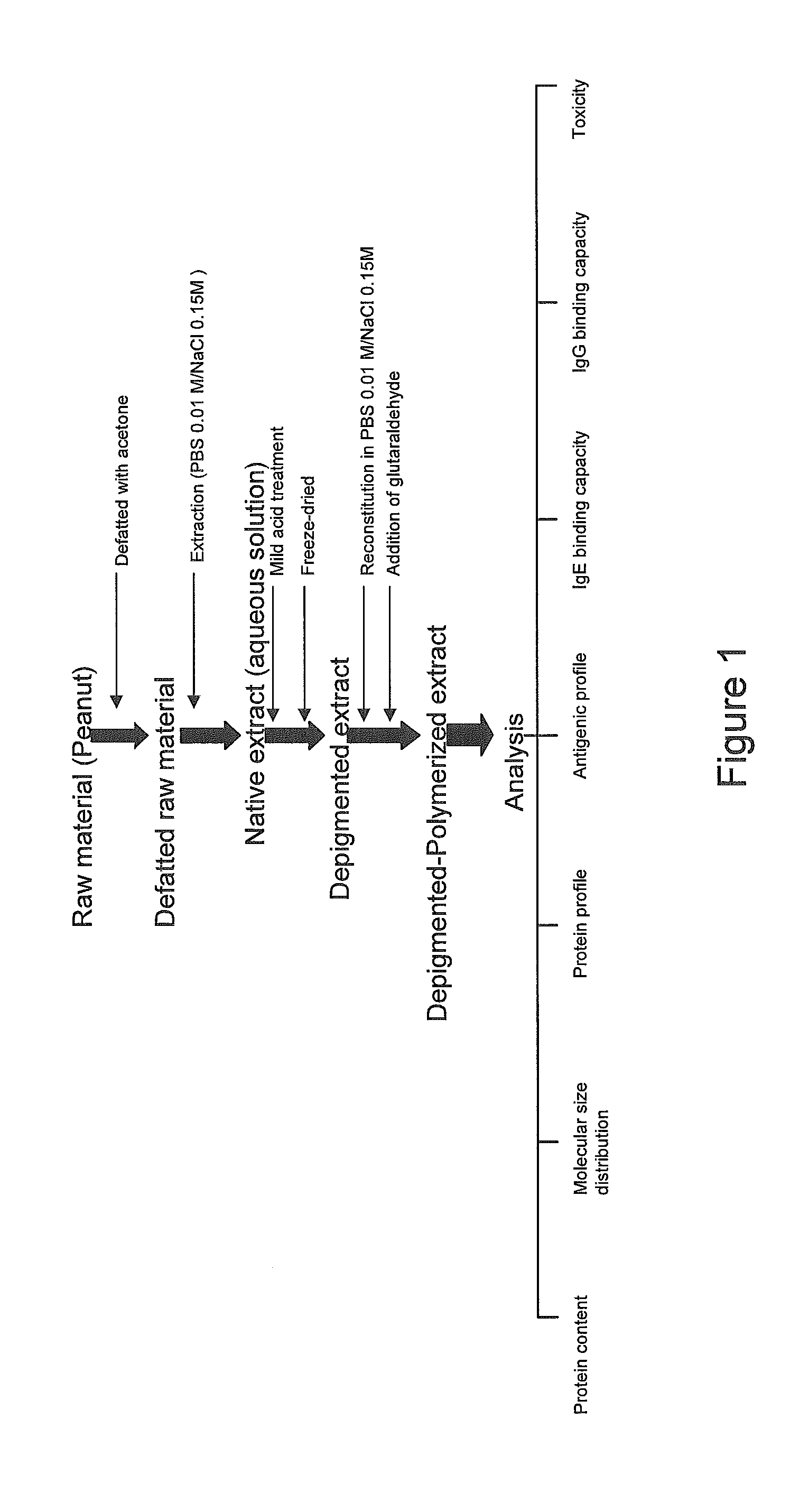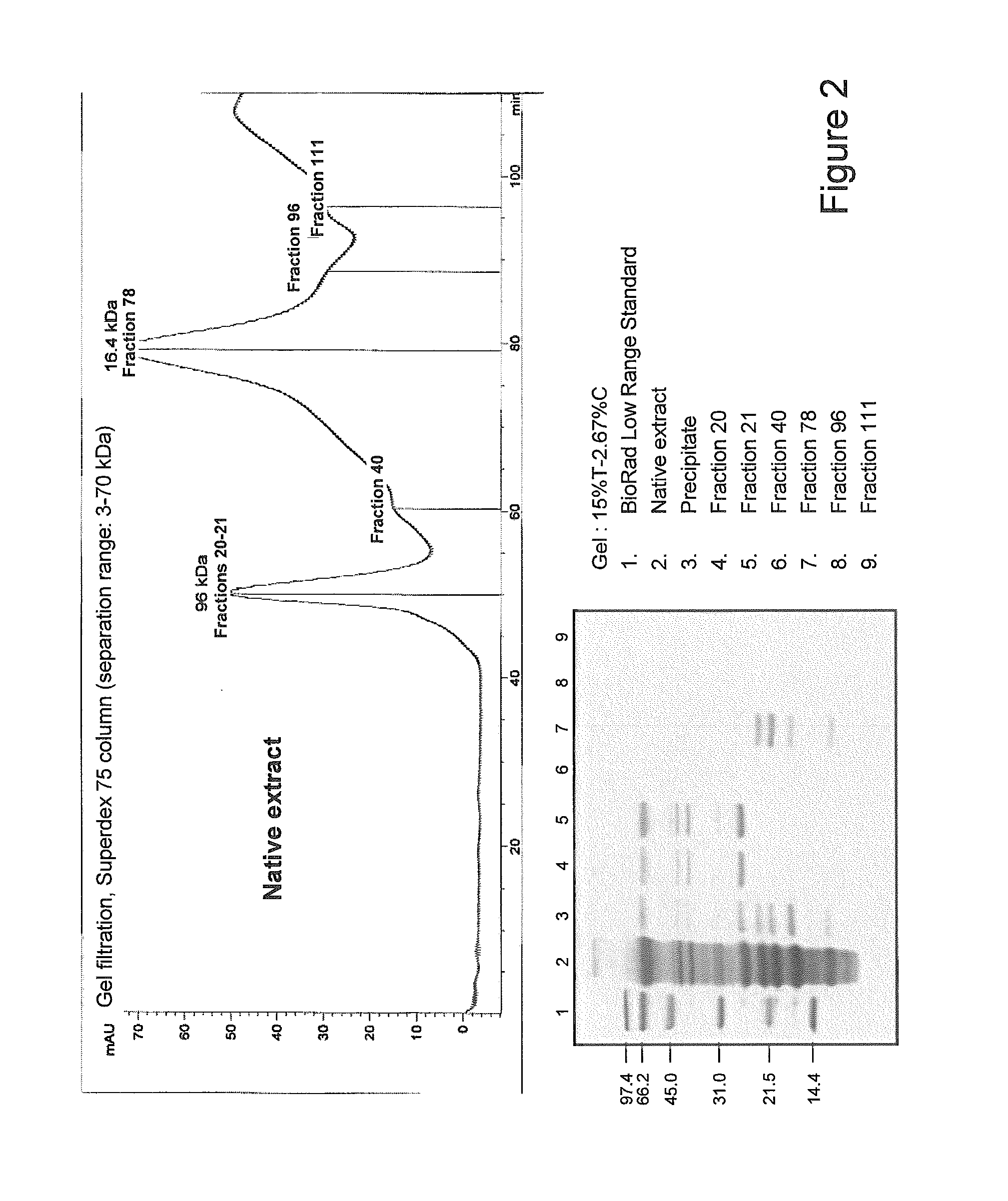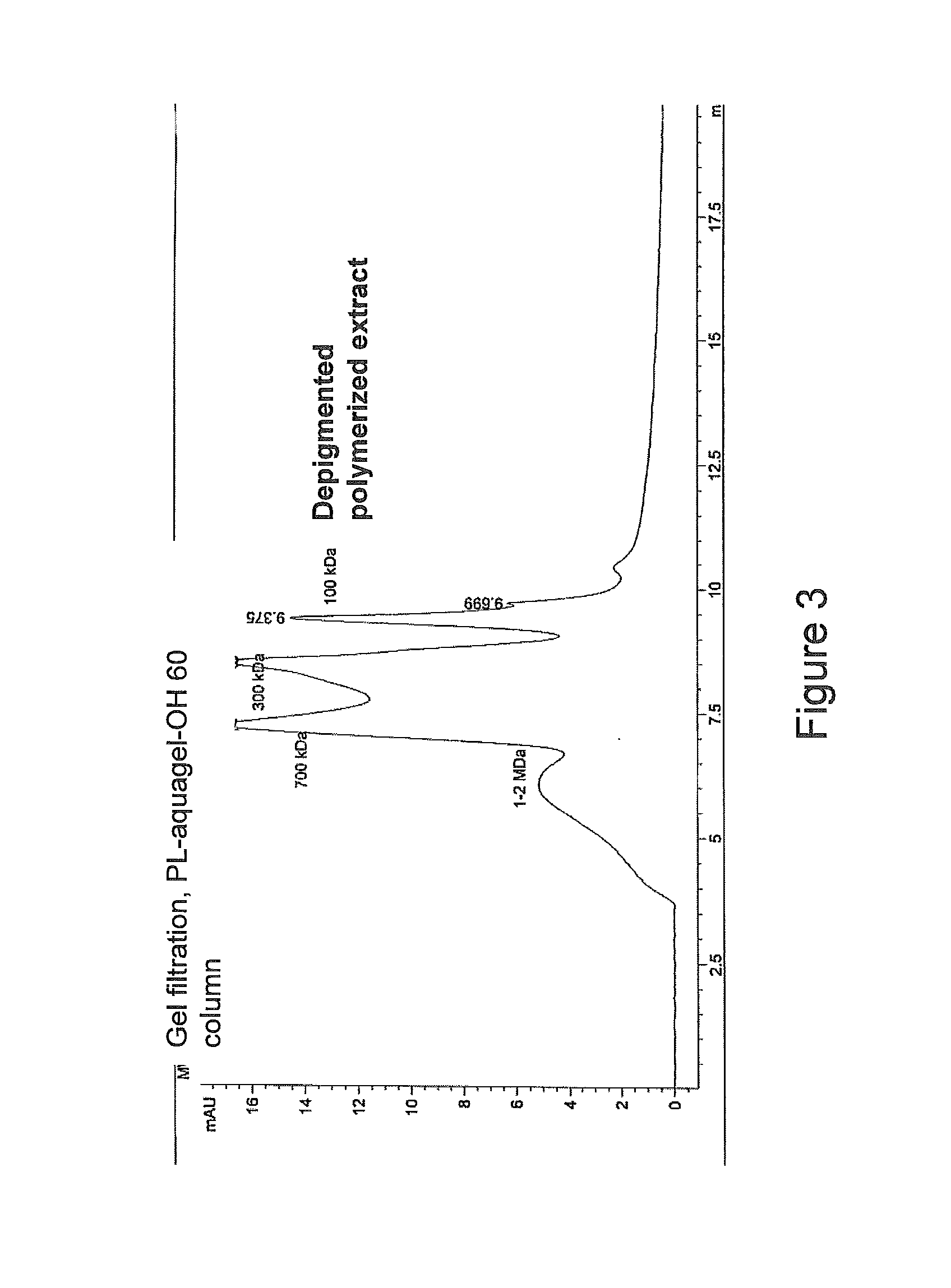Process for producing an allergen extract
- Summary
- Abstract
- Description
- Claims
- Application Information
AI Technical Summary
Benefits of technology
Problems solved by technology
Method used
Image
Examples
example 1
Peanut Allergen Extract
Step A. Defatting Process of Raw Peanut Material
[0127]Peeled peanuts were homogenized in a blender to obtain a homogenized slurry. The homogenized material was defatted with cold acetone in a proportion of 1 kg slurry: 2 L acetone for 1 hour at 3-5° C. under continuous magnetic stirring to extract lipids, fatty acids, and free flavonoids. The resulting solution was filtered in a Buchner funnel. The acetone was removed and the extract was collected in a filter, and washed twice with fresh acetone. The whole process was repeated two more times until the collected acetone was transparent. After finishing the process, the defatted peanut extract was collected and dried at room temperature under a laminar flow hood for 12 hours, until the material was totally dry and all the acetone had been removed.
[0128]Depigmented polymerised peanut allergen extract was obtained in accordance with method steps B-D.
Characterisation of Peanut-Allergen Extracts
[0129]The depigmented...
example 2
Ragweed Allergen Extract (Ambrosia artemisiifolia)
Step A. Defatting Process of Raw Allergen Material
[0138]Ragweed pollen collected from the plant after pollination is defatted with cold acetone in a proportion 1:4 (w / v) under continuous stirring for 3 hours at 3-5° C. The resulting solution was filtered in a Buchner funnel and washed at least three times with fresh acetone. After finishing the process, the defatted extract was collected and dried at room temperature under a laminar flow hood for 12 hours, until the material was totally dry and all the acetone had been removed.
[0139]Depigmented polymerised ragweed (Ambrosia artemisiifolia) was obtained in accordance with method steps B-D. The pH of the solution is adjusted to 4-4.1 by the addition of 0.1M HCl in step 3.
[0140]The final product consists on a freeze-dried depigmented and polymerised ragweed extract, to be stored at 4° C. in freeze-dried conditions. The resulting product has to meet the following specifications:[0141]a. ...
example 3
Pollen Allergen Extract (Olea euopaea)
[0151]Olea europaea pollen collected from the tree after pollination is defatted with cold acetone in a proportion 1:4 (w / v) under continuous stirring for 3 hours at 3-5° C. The resulting solution was filtered in a Buchner funnel and washed at least three times with fresh acetone. After finishing the process, the defatted extract was collected and dried at room temperature under a laminar flow hood for 12 hours, until the material was totally dry and all the acetone had been removed.
[0152]Depigmented pollen allergen extract was obtained in accordance with method step B-C
[0153]The final product consists on a freeze-dried depigmented extract, to be stored at 4° C. in freeze-dried conditions. The resulting product has to meet the following specifications:[0154]a. Soluble product in water[0155]b. Similar protein profile than native extract, determined by SDS-PAGE and 2-D[0156]c. Similar allergenic profile than native extract, determined by immunoblo...
PUM
| Property | Measurement | Unit |
|---|---|---|
| Temperature | aaaaa | aaaaa |
| Electrical conductivity | aaaaa | aaaaa |
| Electrical conductivity | aaaaa | aaaaa |
Abstract
Description
Claims
Application Information
 Login to View More
Login to View More - R&D
- Intellectual Property
- Life Sciences
- Materials
- Tech Scout
- Unparalleled Data Quality
- Higher Quality Content
- 60% Fewer Hallucinations
Browse by: Latest US Patents, China's latest patents, Technical Efficacy Thesaurus, Application Domain, Technology Topic, Popular Technical Reports.
© 2025 PatSnap. All rights reserved.Legal|Privacy policy|Modern Slavery Act Transparency Statement|Sitemap|About US| Contact US: help@patsnap.com



